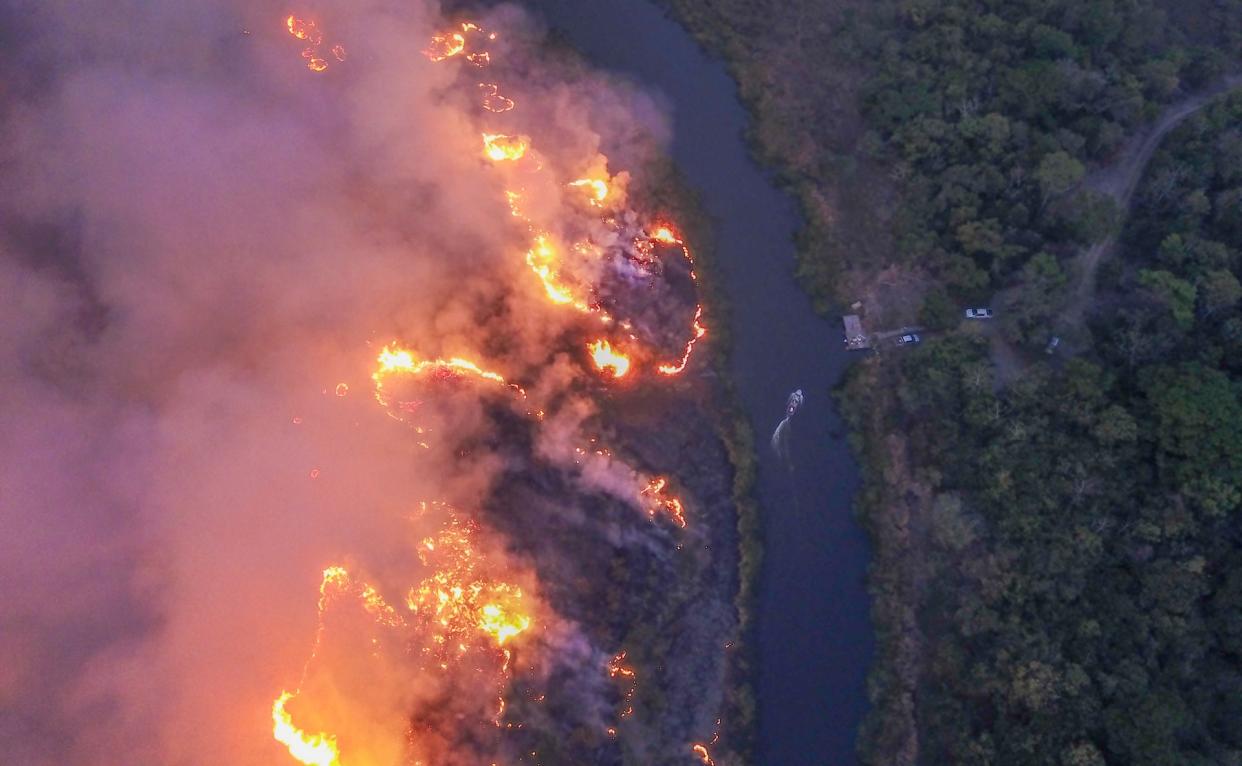Satellite data reveals fires in wetlands surged nearly tenfold this year: 'What's most worrying is that even in the rainy season we had this increase in fires'

Brazil has had one of the worst starts to its wildfire season in the Pantanal wetlands in over 25 years. A lack of rain during the usual time the region sees seasonal flooding is making the area more vulnerable to fires, Reuters reported.
What's happening?
Satellite data has confirmed a nearly tenfold increase in wildfires through early June in Brazil's Pantanal wetlands compared to last year, according to Reuters. This is especially disconcerting since this was observed during the normally rainy season. The peak wildfire season doesn't usually start until July, peaking in August and September.
"What's most worrying is that even in the rainy season we had this increase in fires," said Vinicius Silgueiro, a territorial intelligence coordinator at Instituto Centro De Vida, per Reuters. "It's one of the worst starts of year in terms of hot spots since the beginning of the historical series in 1998."
The fires in early June have broken records for the month. Brazil's National Institute of Space Research has detected over 700 fires through the middle of June. That breaks the previous record of 435 fires observed in 2005.
Why are wildfires in the Pantanal so important?
The state that includes most of the Pantanal, Mato Grosso do Sul, declared an environmental state of emergency in April. State governors in the Pantanal and Amazon have joined forces to address the problem by signing a pact to fight wildfires.
The Pantanal covers 68,000 square miles, making it the largest tropical wetland in the world. It is nearly 10 times bigger than the Florida Everglades. The wetland is home to around 3,500 plant species and almost 160 mammals, including jaguars, armadillos, and capybaras.
Watch now: Local hero single-handedly repopulates endangered butterfly species
Scientists believe the current conditions conducive to wildfires are influenced by a warming world. Carbon pollution traps heat and raises the Earth's average temperatures. Wetlands are valuable carbon sinks, an environment that absorbs more carbon from the atmosphere than it releases.
What can be done to protect wetlands?
Protecting wetlands and other ecosystems that act as carbon sinks is critical for mitigating the impacts of our changing climate. The U.S. Fish and Wildlife Service offers several tips on how to conserve wetlands, including reducing physical and chemical pollution, planting native species, and volunteering with groups to support wetland restoration and enhancement.
On a broader level, we can all change the way we get involved with the climate, in big ways or small. We can all help to reduce harmful heat-trapping gases that are released into the atmosphere.
Changing how we take care of our yards is one small step. Using organic fertilizer reduces harmful chemical pollution that can find its way into wetlands near you. Switching to electric yard tools is not only a cheaper and cleaner option, but it also reduces harmful air pollution.
Join our free newsletter for weekly updates on the coolest innovations improving our lives and saving our planet.

